



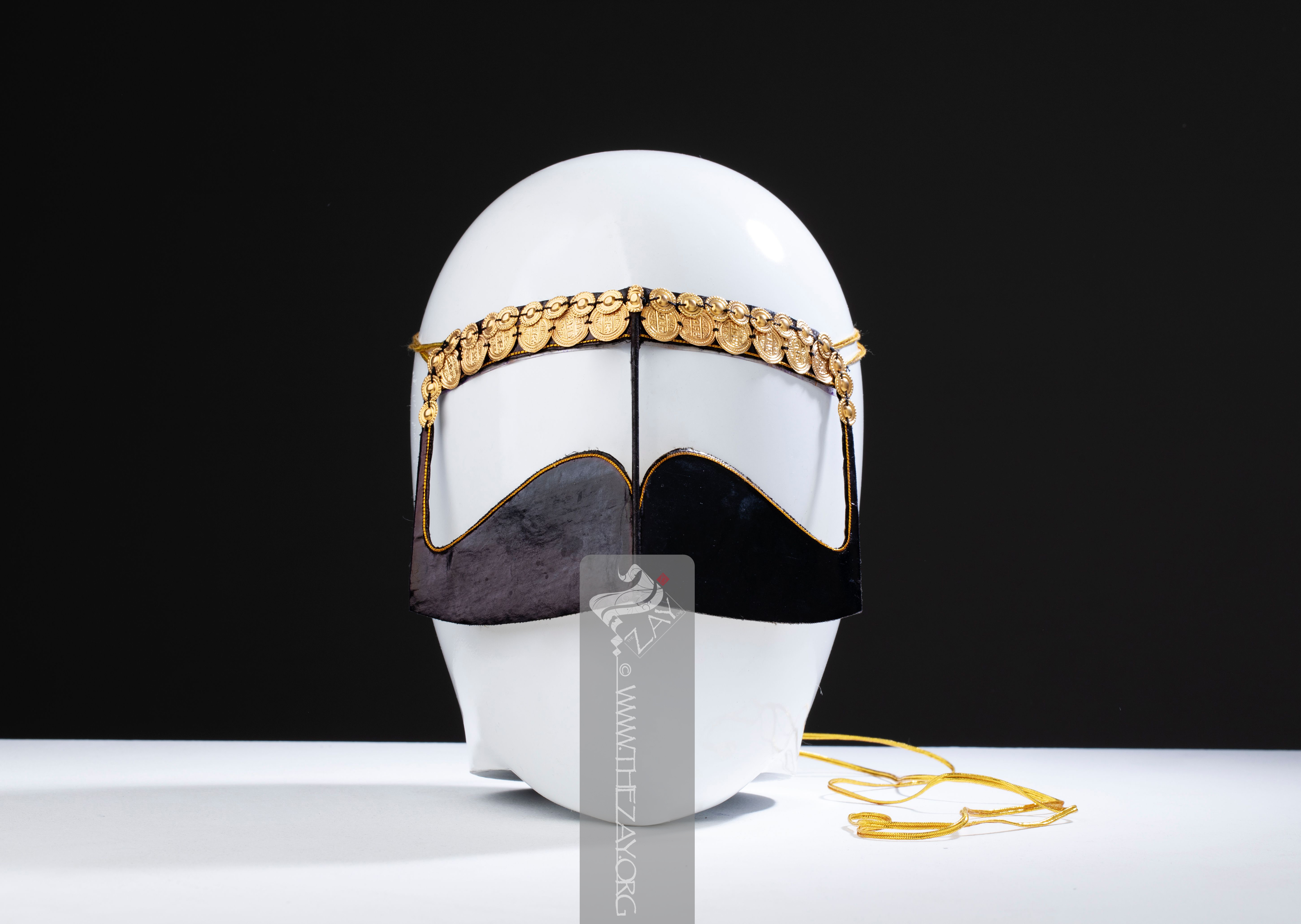
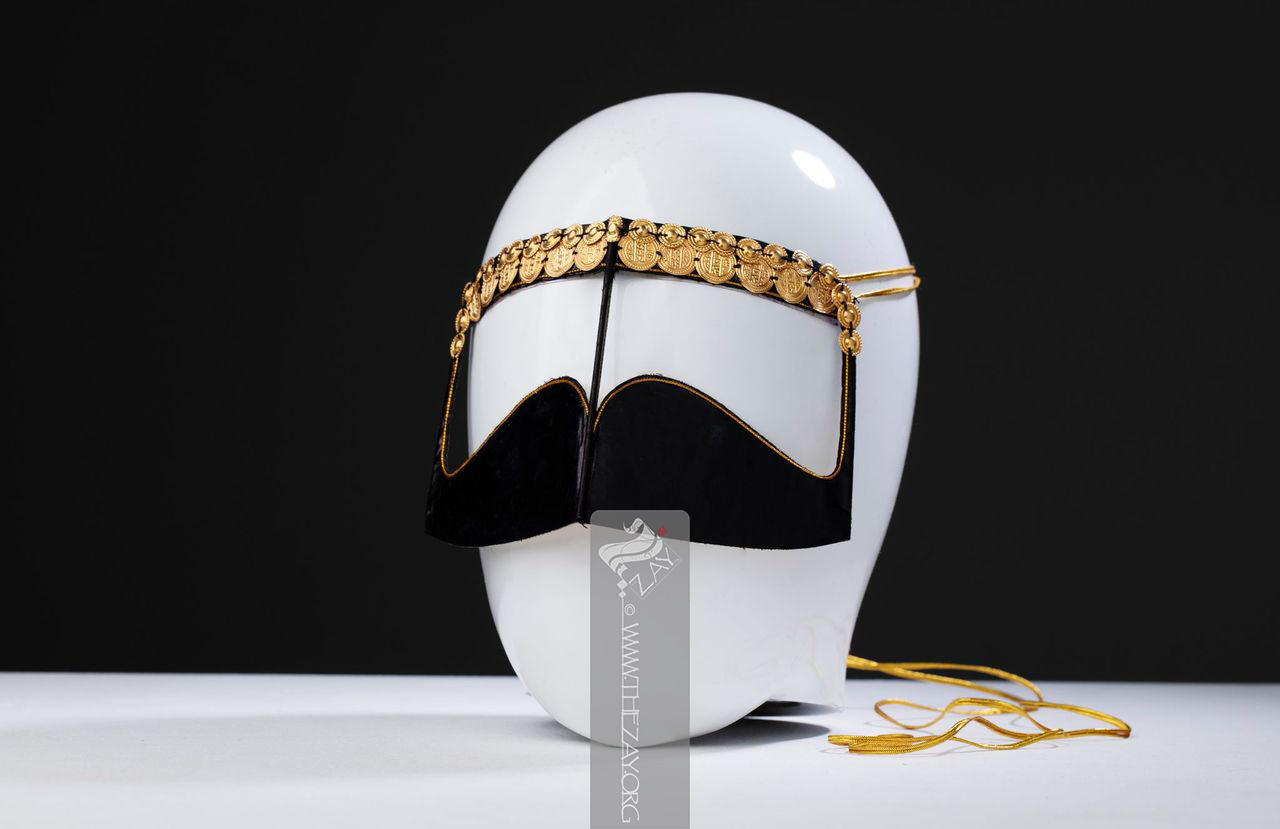
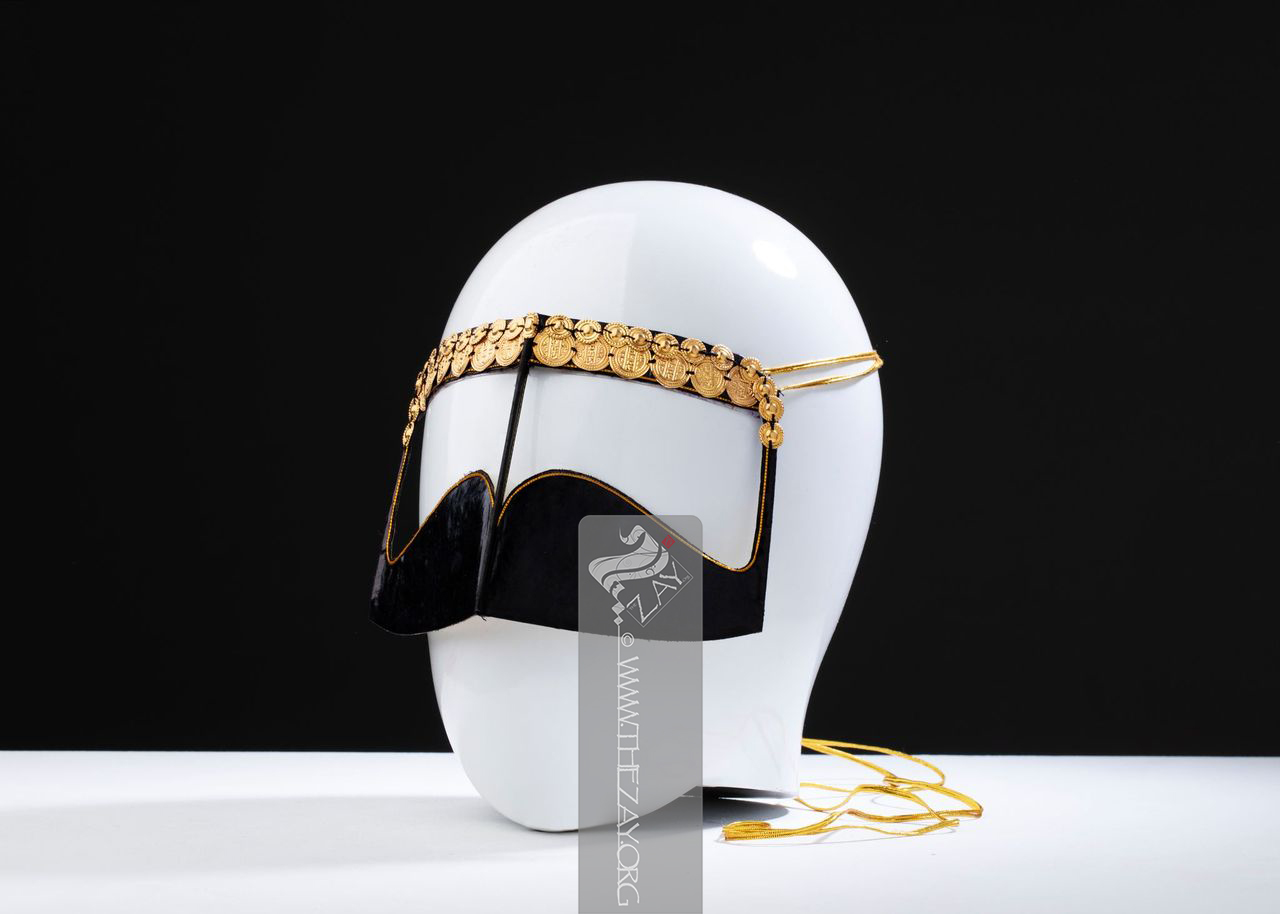
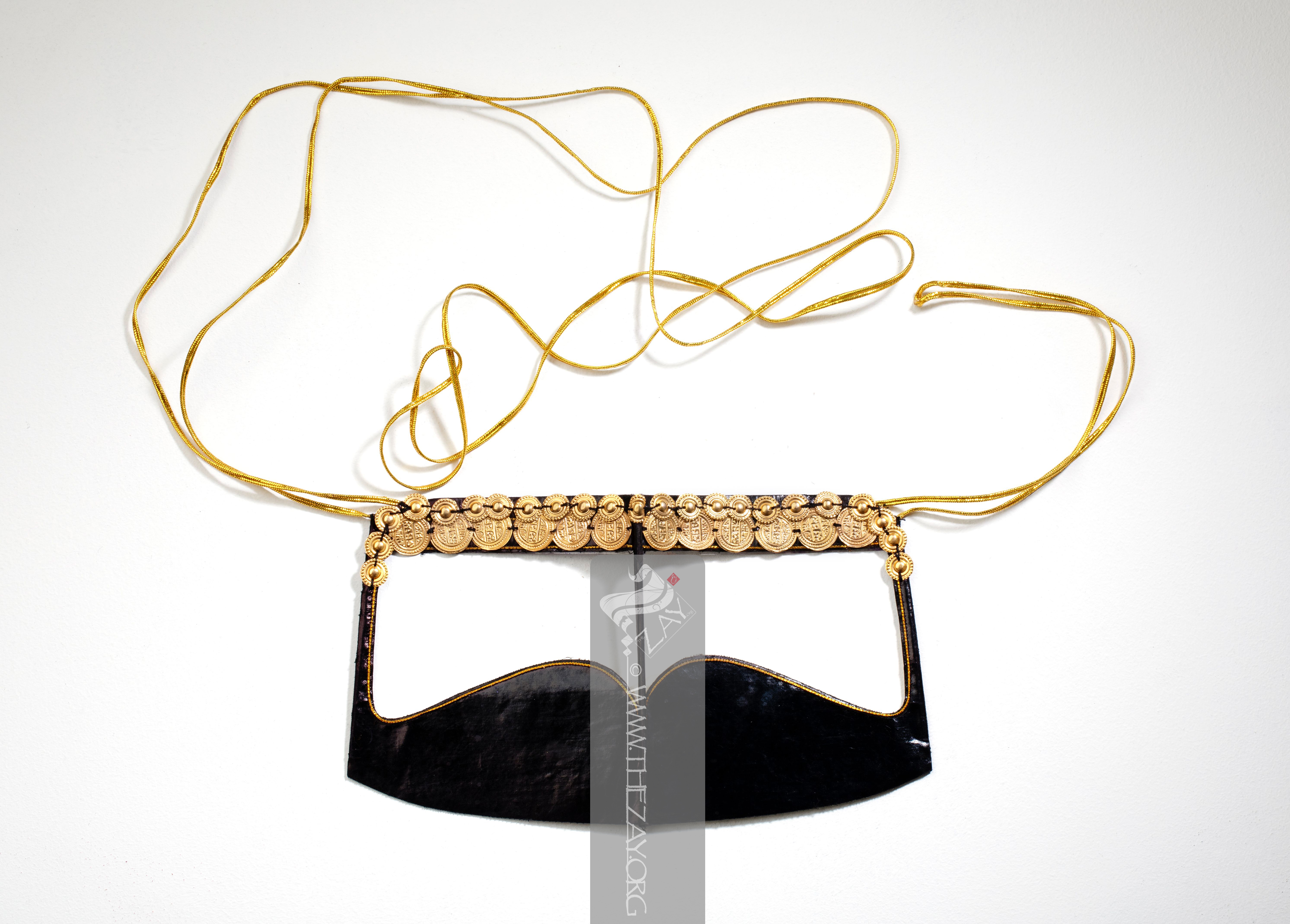

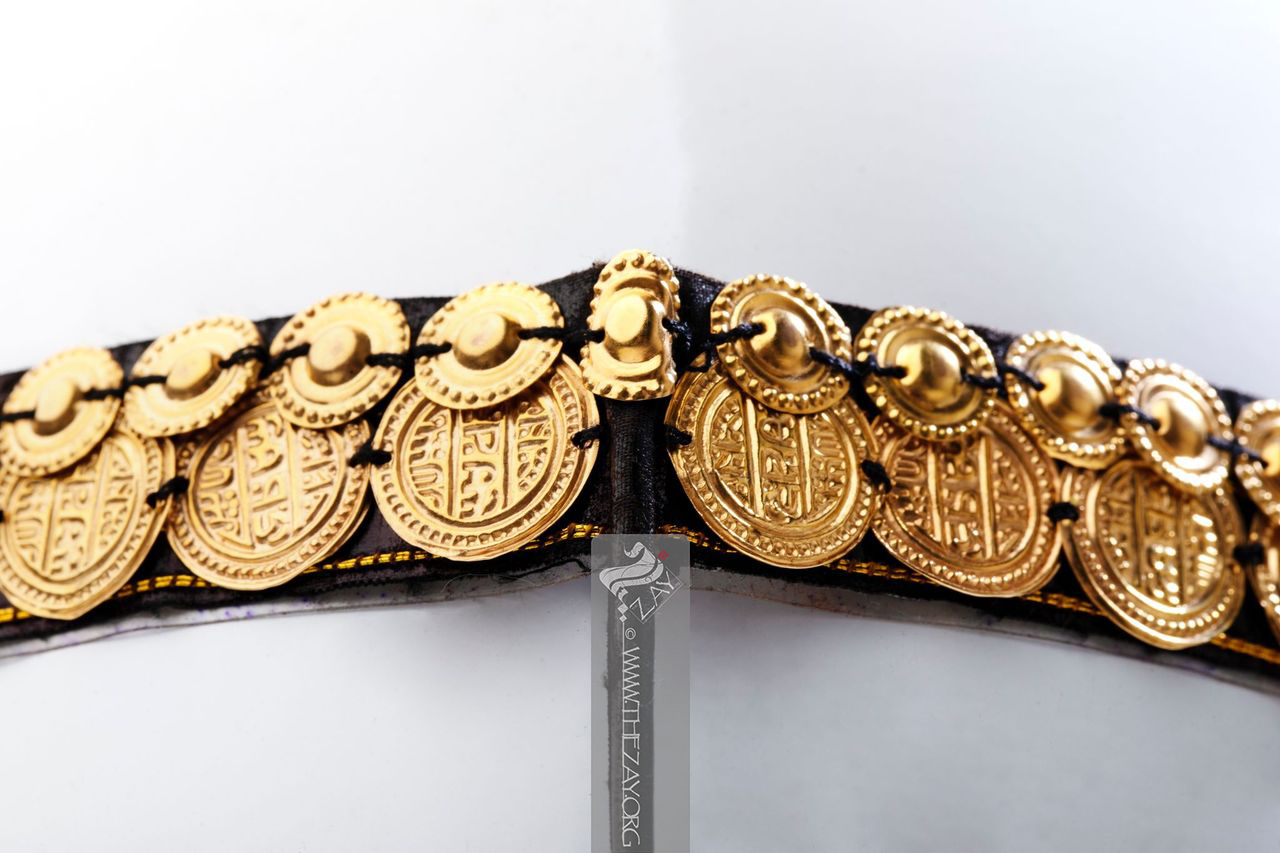

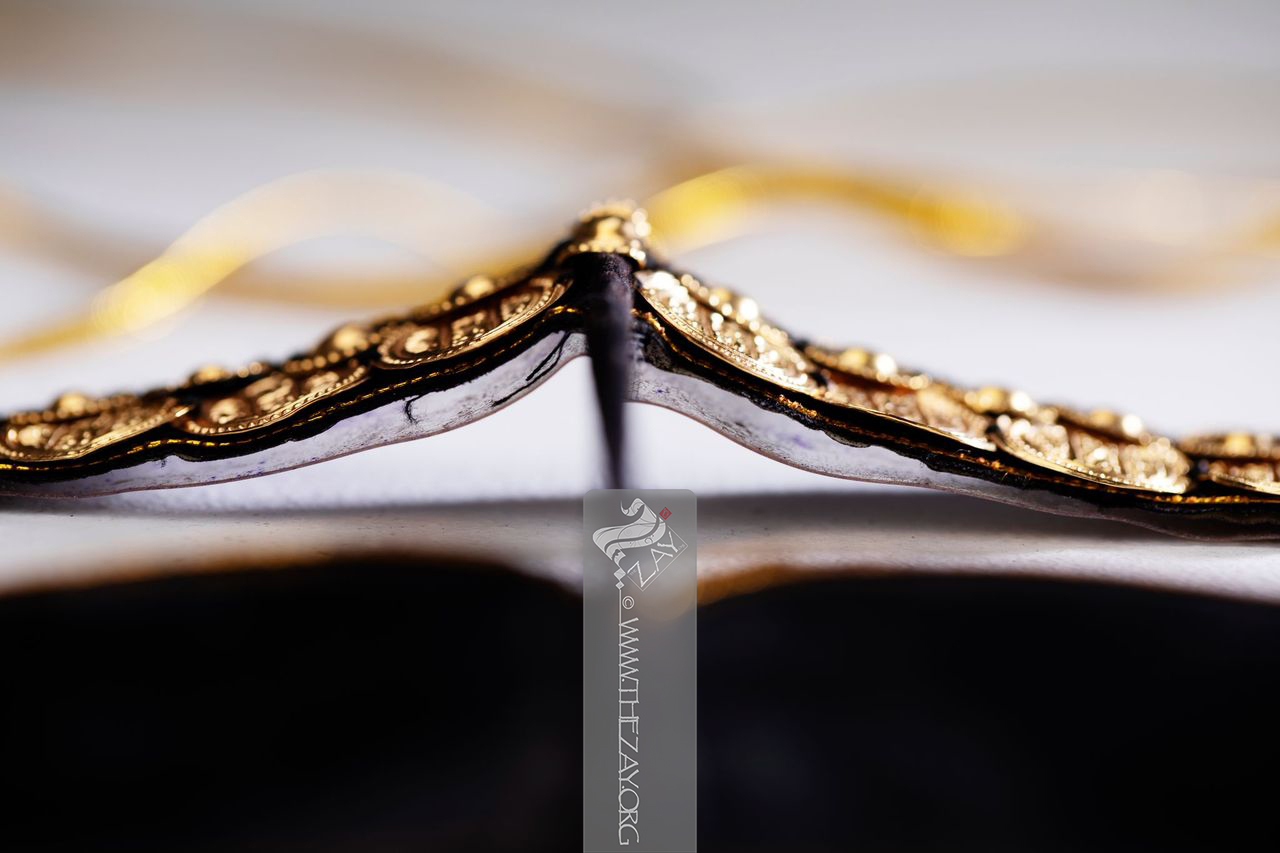
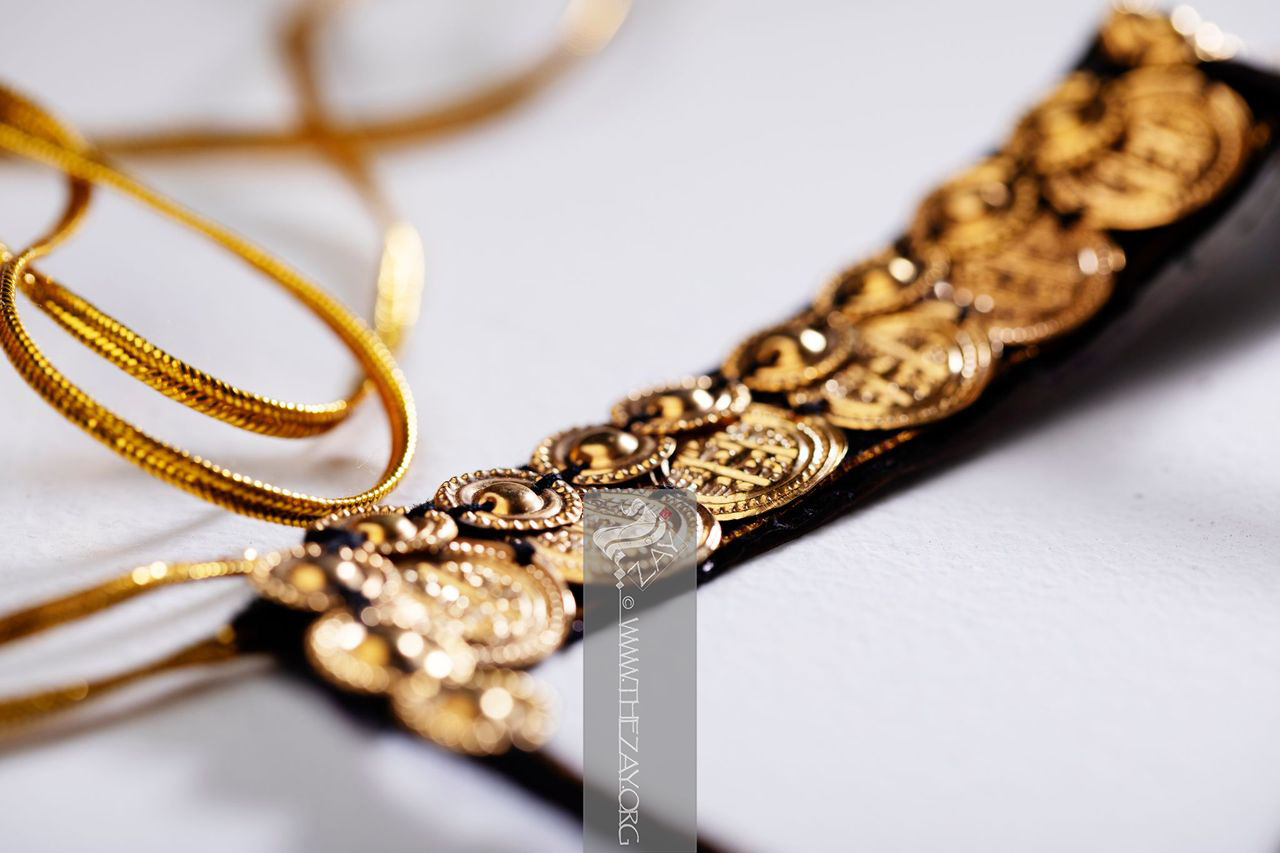
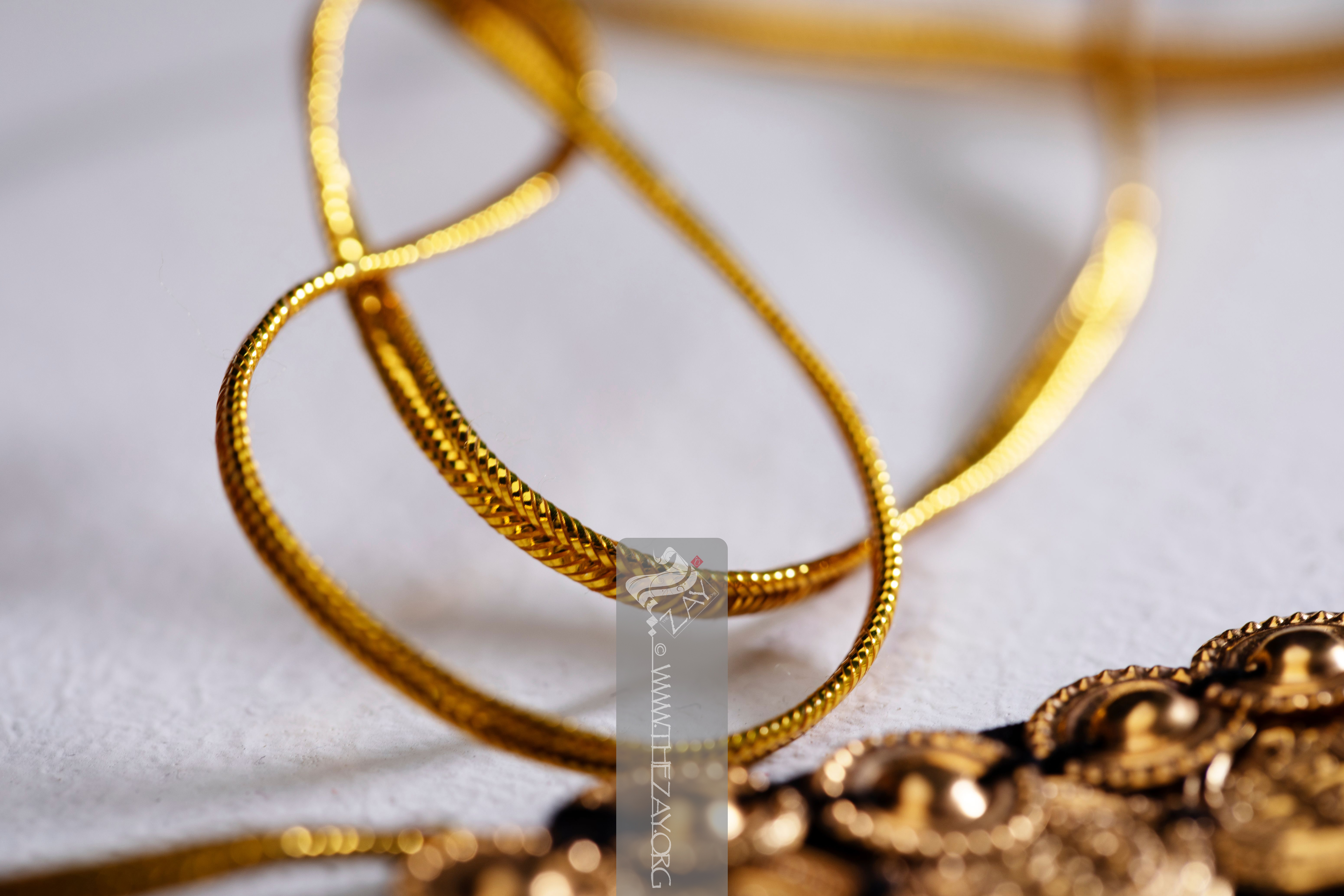
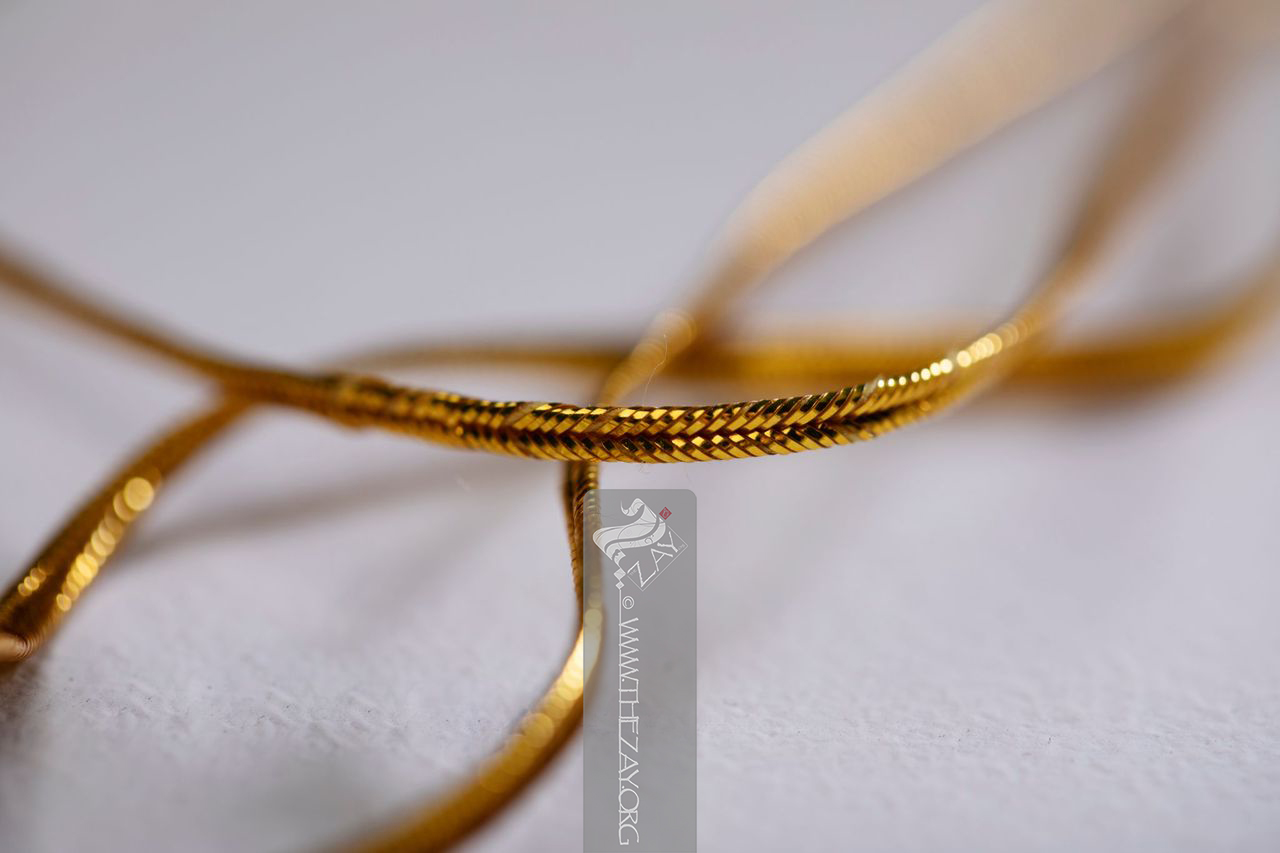
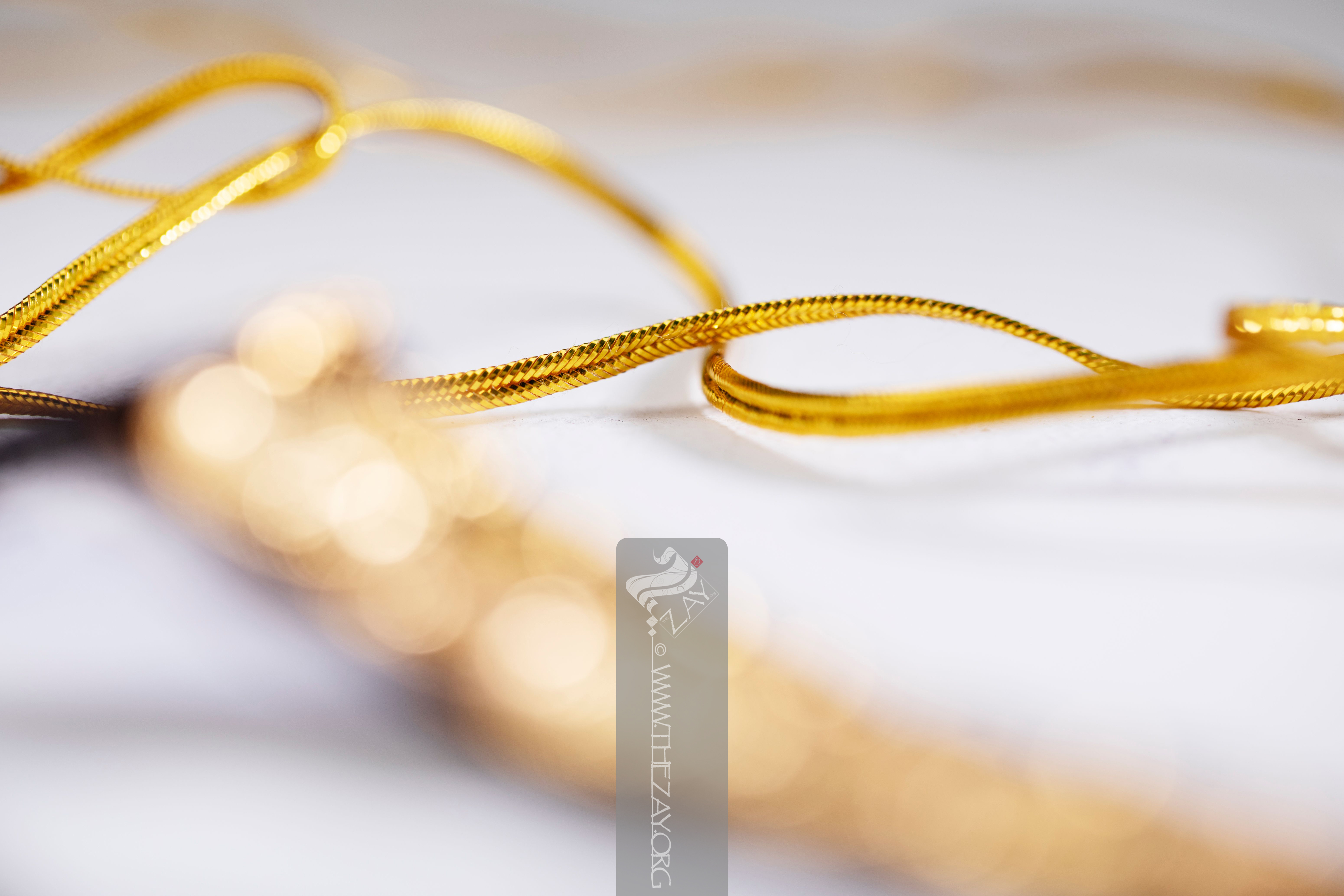



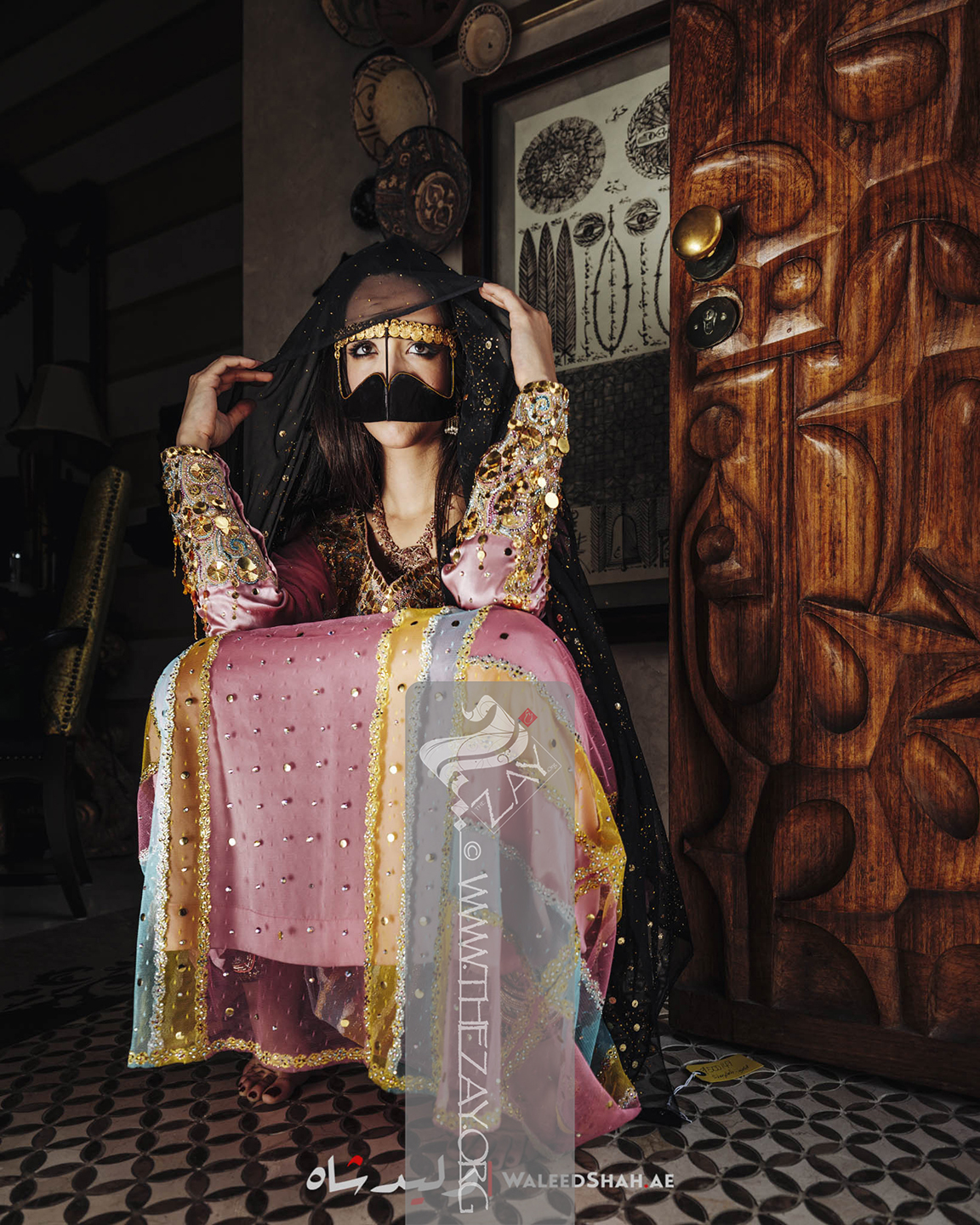
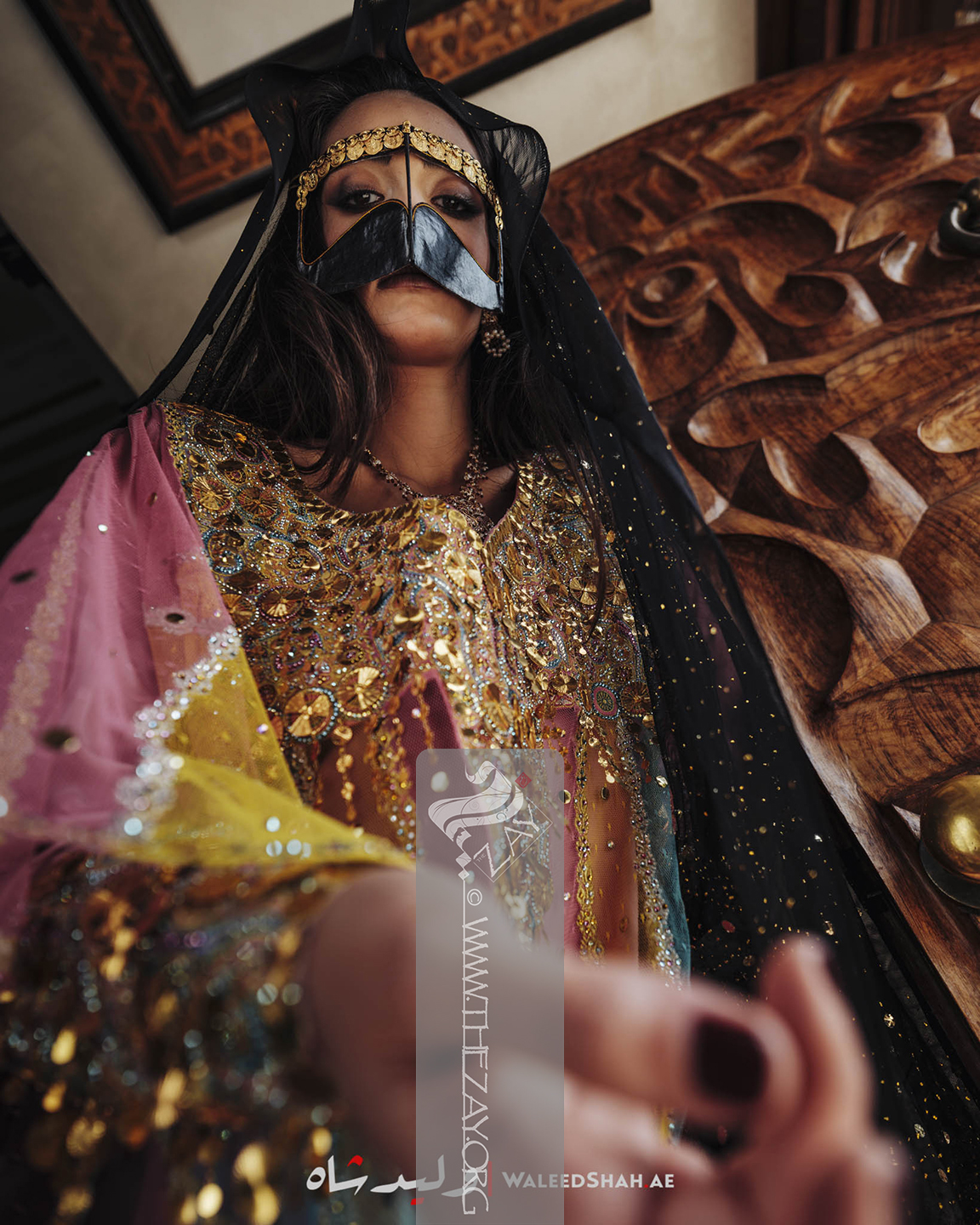

| Local Name | Burgu_ryasi bu_niyum |
| Object Category | Face mask |
| Gender | Female |
| Date of object | 1999 |
| Place Of orgin | United Arab Emirates |
| Region | Al Ain |
| Object Range | Bahrain, Qatar, United Arab Emirates |
| Dimensions | Length: 12 cm Width: 19.7 cm |
| Materials | Cotton |
| Technique | Machine Stitched Embellished |
| Provenance | Gifted, Sheikhah Hamda bint Mohammed Al Nahyan, Al Ain 1999 |
| Location | Traditional Dress House, Al Shindagha Museum, Dubai, UAE |
| Status | On loan |
| ZI number | ZI1999.500500 UAE |
Object History
This face mask (burgu_ryasi
Burgu’ ryāsī: (Arabic: burqa’ ri’āsī), meaning ‘presidential face mask’. (Burgu’) is the generic name given to one of the many forms of face masks made of indigo
Indigo: (Latin: Indigo – India, synonym: nil
Nīl: (Latin: indigo), Arabised term for Indigo, a natural dye belonging to the ‘Indigofera Tinctoria’ species of plants that have been cultivated in East Asia, Egypt, India, and Peru since antiquity. According to Pliny the Elder, it was named after India as it was the source of the dye.), a natural dye belonging to the ‘Indigofera Tinctoria’ species of plants that has been cultivated in East Asia, Egypt, India, and Peru since antiquity. According to Pliny the Elder, it was named after India as it was the source of the dye. -dyed cotton, also known as (bātūlah) in Oman and Qatar. (Ryāsī) means ‘presidential’ and denotes high stature. The [q] turns to [g] in many Arab dialect.) was specially created in 1999 and gifted to Dr. Reem Tariq
Ṭariq: (Arabic; Synonym: tulle_bi_talli
Tūlle_bi_tallī: (French: Tulle – a city in France where fine material for veil was first made; Turkish: tel – wire; Synonym: tariq; talli; badla; khus_dozi ), series of small metal knots made on a woven net ground as embellishment. The term is commonly used in the North African Arab region specifically in Egypt. Ṭariq: (Arabic; Synonym: tulle_bi_talli
Tūlle_bi_tallī: (French: Tulle – a city in France where fine material for veil was first made; Turkish: tel – wire; Synonym: tariq; talli; badla; khus_dozi ), series of small metal knots made on a woven net ground as embellishment. The term is commonly used in the North African Arab region specifically in Egypt.
It was presented to Dr. Reem during her Ph.D. research on the evolution of dress in the UAE, which culminated in the publication of the book: Sultani
Sulṭānī: (Arabic: sultān: king). In the UAE the term denotes to silk satin fabric in multiple vertical striped colours, commonly used for tunics (kanadir) and underpants (sarāwīl). Also refers to book: Sultani, Traditions Renewed, Changes in women’s traditional dress In the United Arab Emirates during the reign of the late Shaykh Zāyid Bin Sultan āl Nahyān, 1966-2004, By Dr. Reem Tariq
Ṭariq: (Arabic; Synonym: tulle_bi_talli
Tūlle_bi_tallī: (French: Tulle – a city in France where fine material for veil was first made; Turkish: tel – wire; Synonym: tariq; talli; badla; khus_dozi ), series of small metal knots made on a woven net ground as embellishment. The term is commonly used in the North African Arab region specifically in Egypt.
Object Features
The overall shape (gardhah Garḍah: (Arabic: qaraḍa: to bite), in the context of clothing in the UAE it means 'to shape' or 'form'. The (qaf) is pronounced as a (ga) in colloquial Arabic of the Gulf region.) of the face mask (burgu Burgu’: (Arabic: burqa’: mask, pl. barāqi’), a generic name given to one of many forms of face veils or masks, known as (niqāb). Stiffer versions made of indigo Indigo: (Latin: Indigo – India, synonym: nil Nīl: (Latin: indigo), Arabised term for Indigo, a natural dye belonging to the ‘Indigofera Tinctoria’ species of plants that have been cultivated in East Asia, Egypt, India, and Peru since antiquity. According to Pliny the Elder, it was named after India as it was the source of the dye.), a natural dye belonging to the ‘Indigofera Tinctoria’ species of plants that has been cultivated in East Asia, Egypt, India, and Peru since antiquity. According to Pliny the Elder, it was named after India as it was the source of the dye. -dyed cotton, are known as (batūlah) in Oman and Qatar. The (qāf) turns to (ga) in many Arab dialects.) follows the (yasi Yāsī: (Arabic: name), reference to (Yās) name of prominent UAE tribe, rulers of the Emirate of Abu Dhabi.) style, named after Yas Yās: (Arabic: name), name of prominent UAE tribe, rulers of the Emirate of Abu Dhabi. tribe. The indigo Indigo: (Latin: Indigo – India, synonym: nil Nīl: (Latin: indigo), Arabised term for Indigo, a natural dye belonging to the ‘Indigofera Tinctoria’ species of plants that have been cultivated in East Asia, Egypt, India, and Peru since antiquity. According to Pliny the Elder, it was named after India as it was the source of the dye.), a natural dye belonging to the ‘Indigofera Tinctoria’ species of plants that has been cultivated in East Asia, Egypt, India, and Peru since antiquity. According to Pliny the Elder, it was named after India as it was the source of the dye. -dyed (nil Nīl: (Latin: indigo), Arabised term for Indigo, a natural dye belonging to the ‘Indigofera Tinctoria’ species of plants that have been cultivated in East Asia, Egypt, India, and Peru since antiquity. According to Pliny the Elder, it was named after India as it was the source of the dye.) burqu fabric is found in grades of bluish to purple, which is then rubbed and pounded to produce a metallic lustre ranging from yellow to brown to reddish gold.
The indigo Indigo: (Latin: Indigo – India, synonym: nil Nīl: (Latin: indigo), Arabised term for Indigo, a natural dye belonging to the ‘Indigofera Tinctoria’ species of plants that have been cultivated in East Asia, Egypt, India, and Peru since antiquity. According to Pliny the Elder, it was named after India as it was the source of the dye.), a natural dye belonging to the ‘Indigofera Tinctoria’ species of plants that has been cultivated in East Asia, Egypt, India, and Peru since antiquity. According to Pliny the Elder, it was named after India as it was the source of the dye. dye would stain the wearer’s face after repeated wear which meant a cloth lining, usually made from cotton, was inserted underneath the traditional face mask burgu Burgu’: (Arabic: burqa’: mask, pl. barāqi’), a generic name given to one of many forms of face veils or masks, known as (niqāb). Stiffer versions made of indigo Indigo: (Latin: Indigo – India, synonym: nil Nīl: (Latin: indigo), Arabised term for Indigo, a natural dye belonging to the ‘Indigofera Tinctoria’ species of plants that have been cultivated in East Asia, Egypt, India, and Peru since antiquity. According to Pliny the Elder, it was named after India as it was the source of the dye.), a natural dye belonging to the ‘Indigofera Tinctoria’ species of plants that has been cultivated in East Asia, Egypt, India, and Peru since antiquity. According to Pliny the Elder, it was named after India as it was the source of the dye. -dyed cotton, are known as (batūlah) in Oman and Qatar. The (qāf) turns to (ga) in many Arab dialects. to prevent this. By the 1980s the trend changed to using sticky strips of masking tape (lazig lazig: (Arabic: laziq: glue), Colloquially in the UAE term refers to masking tape or clear acrylic sheets that are glued to the back of face masks (barāgi’) to help protect the face from getting stained by indigo dye, and help stiffen the fabric. The (qāf) turns to (ga) in many Arab dialects.), which were superseded at the turn of the century by clear transparent adhesive sheets, cut to shape, as can be seen in this example.
This face mask burgu Burgu’: (Arabic: burqa’: mask, pl. barāqi’), a generic name given to one of many forms of face veils or masks, known as (niqāb). Stiffer versions made of indigo Indigo: (Latin: Indigo – India, synonym: nil Nīl: (Latin: indigo), Arabised term for Indigo, a natural dye belonging to the ‘Indigofera Tinctoria’ species of plants that have been cultivated in East Asia, Egypt, India, and Peru since antiquity. According to Pliny the Elder, it was named after India as it was the source of the dye.), a natural dye belonging to the ‘Indigofera Tinctoria’ species of plants that has been cultivated in East Asia, Egypt, India, and Peru since antiquity. According to Pliny the Elder, it was named after India as it was the source of the dye. -dyed cotton, are known as (batūlah) in Oman and Qatar. The (qāf) turns to (ga) in many Arab dialects. is decorated with gold embellishments (hruf Ḥrūf: (Arabic: ḥarf: alphabetical character), thin coin like platelets in gold, with a maximum diameter of 15 mm, stamped in shapes resembling alphabetical characters (ḥurūf) and applied by hand to adorn overgarments (athwāb), tunic dresses (kanādīr), and face masks (barāg’). Common in the Arab Gulf region as a form of ornament. It is melted down and sold in times of need. ) or (mshakhis Mshākhīṣ: (Arabic: shākhiṣ: gaze), gold adornments decorate face masks (burgu‘) or overgarments (athwab). Their sparkle attracts attention and causes one to gaze. Common in the Arab Gulf region as a form of ornament. It is melted down and sold in times of need.) and (niyum Nīyūm: (Arabic: nijum: stars), coin-like gold embellishments with protruding convex centres, applied by hand to adorn overgarments (thwab), tunic dresses (kanadir), and face masks (burgu’). Common in the Arab Gulf region as a form of ornament. It is melted down and sold in times of need. Colloquially, the (jīm) is pronounced (ya).), they are hand-sewn in two parallel lines on the top edge in line with the eyebrows. The top line is composed of 23 small round discs, 10 mm in diameter, with a protruding convex central portion creating a bulging centre that resembles stars, hence it is known as niyum Nīyūm: (Arabic: nijum: stars), coin-like gold embellishments with protruding convex centres, applied by hand to adorn overgarments (thwab), tunic dresses (kanadir), and face masks (burgu’). Common in the Arab Gulf region as a form of ornament. It is melted down and sold in times of need. Colloquially, the (jīm) is pronounced (ya).. They form a straight line across (17 pieces), that curves down on both the left (3 pieces) and right edges (3 pieces). This is followed by another line of 12 discs, 15 mm in diameter, stamped with a coin print of calligraphic forms called hruf Ḥrūf: (Arabic: ḥarf: alphabetical character), thin coin like platelets in gold, with a maximum diameter of 15 mm, stamped in shapes resembling alphabetical characters (ḥurūf) and applied by hand to adorn overgarments (athwāb), tunic dresses (kanādīr), and face masks (barāg’). Common in the Arab Gulf region as a form of ornament. It is melted down and sold in times of need. or mshakhis Mshākhīṣ: (Arabic: shākhiṣ: gaze), gold adornments decorate face masks (burgu‘) or overgarments (athwab). Their sparkle attracts attention and causes one to gaze. Common in the Arab Gulf region as a form of ornament. It is melted down and sold in times of need.. The mask burgu Burgu’: (Arabic: burqa’: mask, pl. barāqi’), a generic name given to one of many forms of face veils or masks, known as (niqāb). Stiffer versions made of indigo Indigo: (Latin: Indigo – India, synonym: nil Nīl: (Latin: indigo), Arabised term for Indigo, a natural dye belonging to the ‘Indigofera Tinctoria’ species of plants that have been cultivated in East Asia, Egypt, India, and Peru since antiquity. According to Pliny the Elder, it was named after India as it was the source of the dye.), a natural dye belonging to the ‘Indigofera Tinctoria’ species of plants that has been cultivated in East Asia, Egypt, India, and Peru since antiquity. According to Pliny the Elder, it was named after India as it was the source of the dye. -dyed cotton, are known as (batūlah) in Oman and Qatar. The (qāf) turns to (ga) in many Arab dialects. is fastened to the head using a braided golden metallic cord known as (shbuch Shbūch: (Arabic: shabak: interlace), Colloquially in the UAE term refers to braided cotton or metallic cord used to fasten face mask (burgu’) to the head. The (kāf) turns to (cha) in local dialect.).
This represents a physical example of the traditional Arabic saying (zinah_wa_khazinah Zīnah_wa_khazīnah: (Arabic: zīnah: beauty, khazīnah: treasury), an Arab saying meaning ‘beauty and wealth in one.’ In nomadic cultures wealth was portable and jewellery and precious garments were made not only as wearable works of art and status but also as a practical method of guarding and securing precious assets by keeping them close to their owners. Similar phrases are common around the Arab world, for example in North African Arab countries such as Libya they say: al hadīd_lil_shadīd.), meaning ‘beauty and wealth in one’. The gold was employed to demonstrate style and reflect social status, but could also be melted down and sold in times of need.
Read More